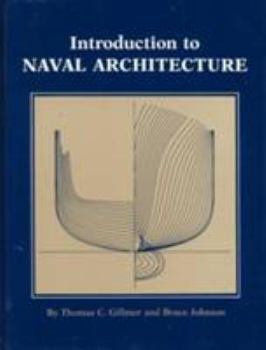Introduction to Naval Architecture
Select Format
Select Condition 
Book Overview
The book covers such topics as ship geometry, properties of shipbuilding materials, stability, submarine hydrostatics, propellers and propulsion systems, and maneuverability. Appendices include conversion tables, lists of fresh- and saltwater properties, and numerical integration techniques.
Format:Hardcover
Language:English
ISBN:0870213180
ISBN13:9780870213182
Release Date:August 1982
Publisher:Naval Institute Press
Length:324 Pages
Weight:2.50 lbs.
Dimensions:1.2" x 8.7" x 11.1"
Customer Reviews
5 ratings
Great book for starters
Published by Thriftbooks.com User , 15 years ago
This book is great for starters in Naval Architecture and Engineering. I am a Naval Engineering Student and usually borrow this book from the library. But I liked it so much that I bought it for me to have one at home. There is introduction about stability, resistance of material, etc.
Excellent Resource
Published by Thriftbooks.com User , 18 years ago
"Introduction to Naval Architecture" provides a unique approach to ship design. Although this approach is quantitative and mathematically "intense", Gillmer also provides qualitative description within certain chapters. Ultimately, for the purposes of clarity and a definitive understanding of basic ship design, this work is best coupled with "Introduction to Naval Architecture" (E.C. Tupper), which provides a "descriptive" perspective. The Gillmer and Johnson referenece is highly recommended for those individuals who have prior knowledge of naval architecture, and a strong foundation in mathematics; otherwise, the aforementioned coupling of two references becomes necessary. Please note: This is my opinion as a high school Senior completing an independent research project within the field of naval architecture.
Introduction to Naval Architecture
Published by Thriftbooks.com User , 19 years ago
Purchased for my high school senior to do an independent study in Naval Architecture. The math was more advanced than he was prepared for, but it provides the a reasonable introduction to basic concepts he needs to understand.
Great for novices and experts
Published by Thriftbooks.com User , 21 years ago
This is a great text for everyone. I think Zubaly's Applied Naval Architecture does a slightly better job in presenting the coefficients, but in every other respect, this text is superior. Zubaly and this text are weak in the details of seakeeping, but there are several other specific seakeeping texts, namely Dynamics of Marine Vehicles by Battacharia (I know I misspelled his name)
The most complete NA reference available
Published by Thriftbooks.com User , 23 years ago
With the possible exception of SNAME's "Principles of Naval Architecture," "Introduction to Naval Architecture" is the perfect introductory text for any naval architecture/marine engineering student. It includes brief but dense overviews of hydrostatics, hydrodynamics, ship structure, resistance, and propulsion. While there are more detailed texts for each of the above topics (again, SNAME's PNA does a good job as a reference, but not so much as a text, and Harvald's "Resistance and Propulsion of Ships" is THE text for that topic), it is the perfect source for equations, derivations, illustrations, graphs, and, most importantly, example problems. It's very hard to find any clear examples of NA problems in most texts - the examples in this book are worked through step by step, which makes comprehension a breeze. If you're studying or working in the field of naval architecture, this book is a necessary addition to your reference library.






